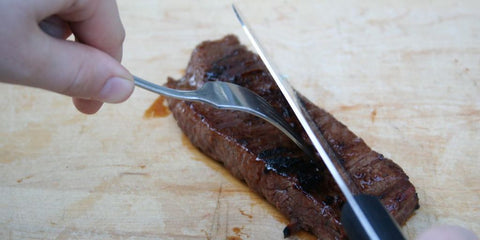Choosing the Right Cut of Steak
Understanding Different Steak Cuts
The perfect steak begins with understanding various cuts of steak. Each cut comes from different parts of the animal and possesses unique characteristics in terms of flavor, texture, and tenderness. For instance, a ribeye offers rich marbling with more flavor, while a sirloin provides a leaner option with less fat.
Consider what you value most in a steak—whether it's the tenderness of a filet mignon or the robust flavor of a T-bone. Your choice will determine the cooking method and the final outcome of your dish.
Preparing the Steak for Slicing
Properly Seasoning the Steak
The simple combination of salt and pepper will bring out the natural flavors of the meat. Feel free to experiment with other spices and herbs such as garlic powder, onion powder, paprika, thyme, and red chili flakes. Ensure the seasoning is evenly distributed over the steak to get the most consistent flavor in every slice.
Let the Steak Rest Before Slicing
Allowing the steak to rest after cooking helps the meat retain its juices. Rest your steak for 5–10 minutes before cutting. The resting period helps in distributing the juices evenly, making the steak more tender and flavorful when sliced.
Tools and Equipment for Slicing
To achieve the perfect slice, using the right tools is essential. Use a sharp chef's knife to give you those clean lines while leaving steak juices intact. A sharp, high-quality steel knife is your best bet for smooth slicing. The SolBlade Chef's Knife is made from premium Japanese Damascus steel and is known for its sharp, long lasting blade. Allow the knife to do the work without pressing down too hard, going in smooth motions with the blade.
Techniques for Slicing the Steak
Slicing Against the Grain
The most important factor to keep in mind is to slice against the grain. This means identifying the direction in which the muscle fibers are aligned and cutting perpendicular to them. By doing so, you shorten the fibers, making the steak tender and easy to chew.
Achieving Uniform Steak Slices
Uniform slices not only are good for presentation, but also give you the maximum flavor distribution. To achieve uniformity, maintain a steady hand and make sure your knife's blade is sharp. Consistency in the thickness of each slice will contribute to a more professional appearance and a better eating experience.
Adjusting Thickness for Different Cuts
Different steak cuts may require different slicing techniques. Thicker cuts like ribeye might benefit from slightly thicker slices to preserve their juice, while leaner cuts like flank could be sliced thinner to emphasize its more delicate texture. Adjusting your slicing technique based on the cut can greatly enhance the overall quality of your steak.
This Memorial Day, create the ultimate outdoor grilling experience with your perfectly sliced steak!



